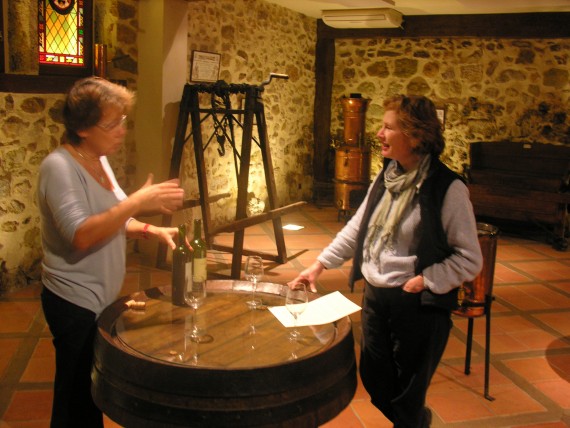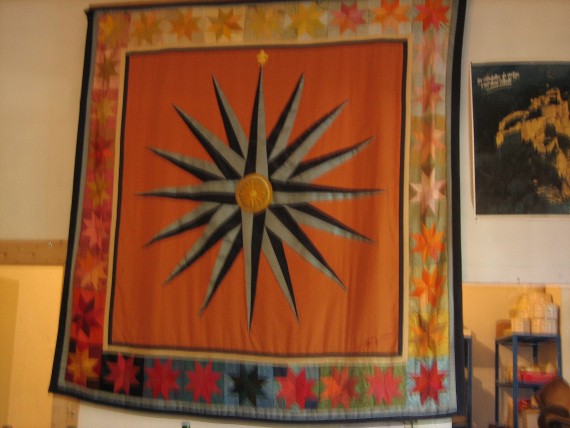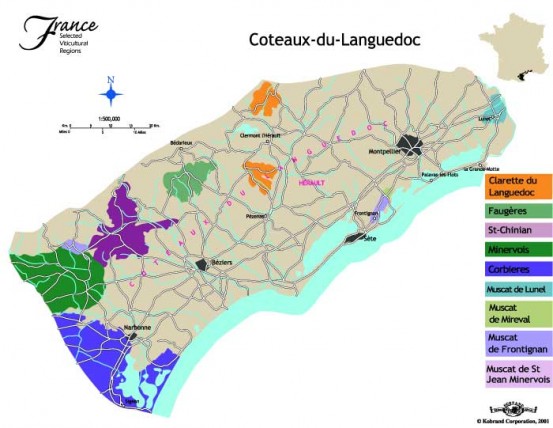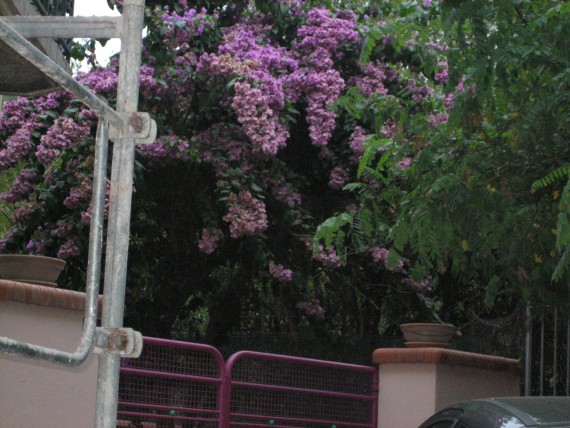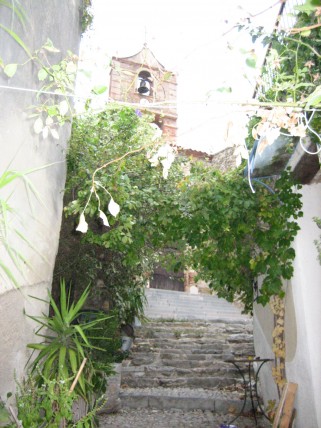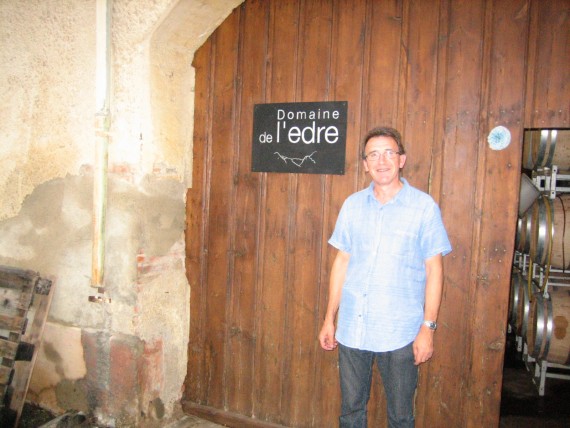The single largest sub-region of the Languedoc is the Corbières. David and I made a quick look around last spring with stops in Corbières-Boutenac (an AOC since 2005), and Minervois another sub-region (also an AOC).
My landlord and on this occasion host Malcolm, has lived in the area for many years. His restaurant specialized in the local wines and his knowledge of the Corbières is extensive. He kindly offered to show me some of his favorite spots.
Traffic interrupted the early portion of the plan (Malcolm’s chosen lunch spot) and we ended up having a simple but delicious meal in the town of Lezignan-Corbières that according to Malcolm is the “seat” of the Corbières region. I had my first entrecôte et frites of the trip. The meat was perfectly cooked, juicy, and tender. Malcolm had the magret (duck breast) and as he cleaned his plate without even a leftover for his four legged companion Penny, you can believe that it was a savory delight.
Fully fed, we headed to the Castle of Boutenac, now a regional center for information and events that focus on the viticultural importance of the area. David and I had visited here last spring as well as the small town across the autoroute of Luc-sur-Obieu where we enjoyed a meal that I can still deliciously describe. It was a heartwarming moment to realize that just five months ago we had sat together in this very courtyard talking about future plans that have morphed into what I am doing now. We had just experienced an incredible weekend in the greater Chateauneuf region with dear friends and were then beginning our exploration of the Languedoc-Roussillon region and had yet to work our way through Spain and the grenache centric regions of Priorat and Montsant. What a difference a day makes (or in my case a year as I am celebrating the one year anniversary of the sale of my distribution company!).
From the castle (where Malcolm left an incredible gift of an older bottle of wine for their museum) we headed into the town of Boutenac to our destination at Château La Voulte-Gasparets. Madame answered the door and greeted us warmly as we stepped into the cool cellar and out of the mid-day sunlight. Here again, Malcolm brought a special 20 year old bottling for the domaine. Madame was frankly a bit beside herself and seemed almost unsure, but thoroughly warmed, with cet cadeau. We tasted their two current red wine releases and Malcolm prompted a visit to their adjacent barrel chai. There is a new generation taking over the family estate and it shows. The approach is modern with clear respect for the past.
We next stopped at Château Aiguilloux. Another small family owned estate that one would not find without a guide. Sadly, they were not available to see us. A somewhat lengthily, but hastily written penciled note explained that “I” , the proprietor was malade and off to the doctor. We weren’t the only ones disappointed as a couple from Germany drove up just as we were leaving. Once again, Malcolm left an older bottle from his cellar as a gift (and I understand that he received word back and not surprisingly a hearty thank you!).
We wound our way along the D611 with vineyards rising softly along both sides of the road. We turned into a charming older domaine, Château Gléon-Montanié. A younger man, full of purpose, indicated an older gentlemen (no doubt his father) when we inquired about une dégustation. The senior member of the family was on the phone having a spirited conversation. The dogs made certain that we were entertained as we waited. The wait was worth every minute as Jean-Pierre Montanié graciously hosted us for a tasting. He was a treat for me because he spoke crisp French, slowed to my less than fluent ears. Naturally, the conversation was delightful. He seemed very up to date with places like Oregon and what was happening in the American wine industry. It was clear that he had a mind for business.
We headed leisurely home.

